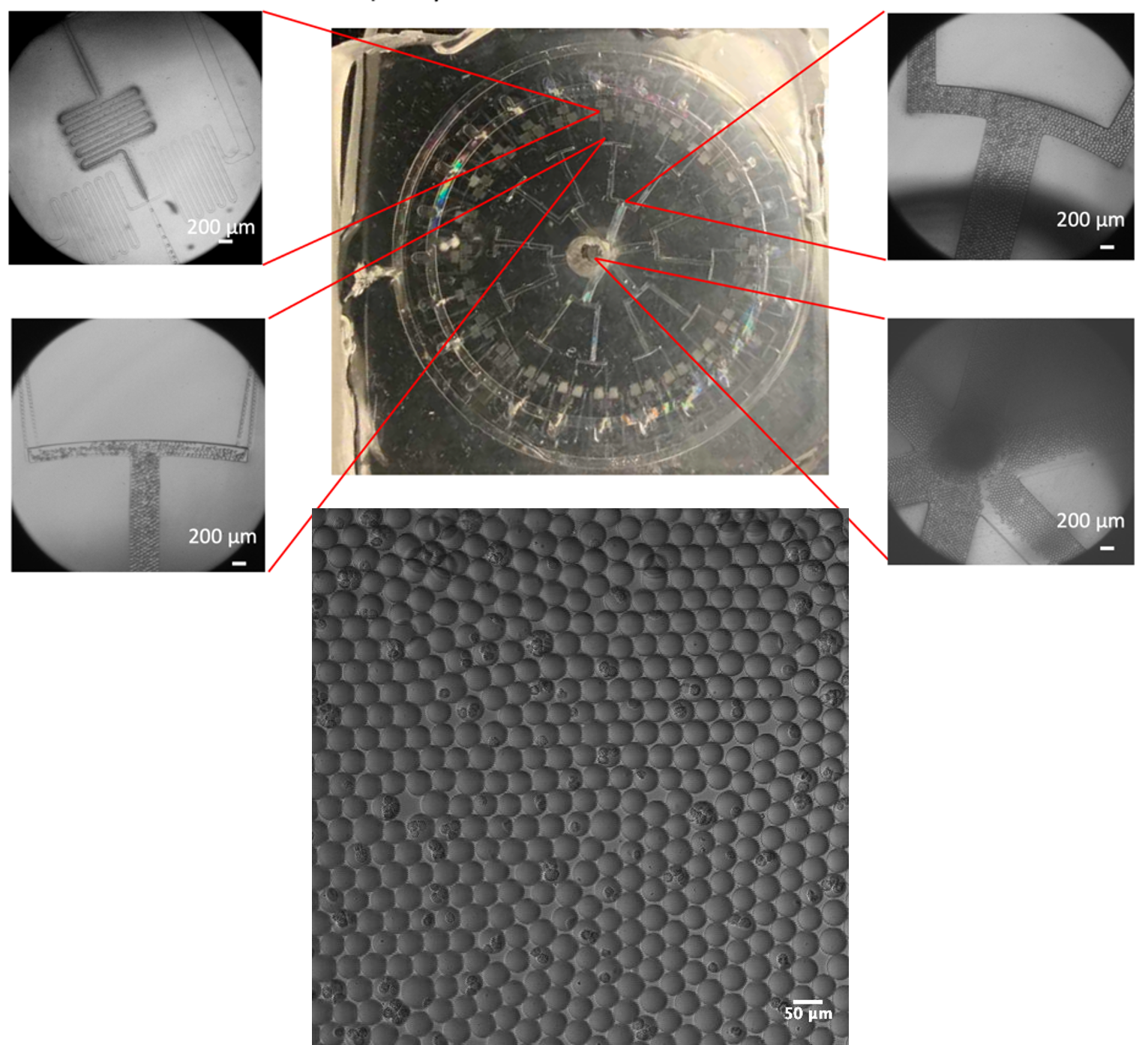Large-scale, Microfluidic Methods
to Encapsulate and Protect Cells for Therapeutics

Mooney and Weitz developed microfluidic methods to encapsulate mesenchymal stem cells (MSC) in alginate microgel particles. Mesenchymal stem cells have significant promise as therapeutics for treatment of disease. However, clinical trials suffer from disappointing results. A major problem of therapeutic MSC use is the fast clearance of the injected cells from the host body. When MSCs are encapsulated in alginate microgels, they are shielded from attack of host immune cells. The hydrogels form only a thin protective layer around the cells and thus facilitate permeation of biological molecules across the capsules. The microgels extend the circulation time of injected cells in the host body while maintaining the therapeutic function of the injected cells by facilitating secretome release. To meet the large cell-number requirement for clinical doses, graduate student Anqi Chen developed a large-scale, microfluidics-based cell encapsulation device consisting of 24 droplet makers in parallel in a circular array shown (top right). Highly monodisperse microgels are produced and shown in the image (bottom).
David J. Mooney (Bioengineering) and
David A. Weitz (Physics & Applied Physics)
2020-2021 Harvard MRSEC (DMR-1420570)
